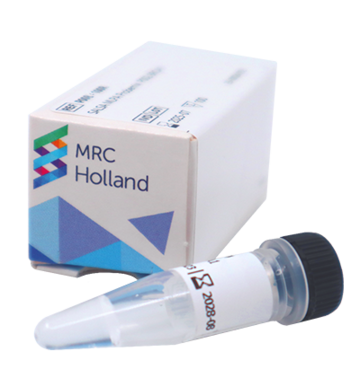The SALSA MLPA Probemix P214 COL2A1 is a research use only (RUO) assay for the detection of deletions or duplications in the COL2A1 gene, which is associated with type II collagen disorders.
The COL2A1 gene (54 exons) spans ~31.5 kb of genomic DNA and is located on 12q13.11, ~47 Mb from the p-telomere. It encodes the pro-alpha-1 (II) chain of type II collagen, the major collagen found in cartilage and the vitreous humour of the eye. Defects in the COL2A1 gene lead to a number of different disorders, collectively called type II collagen disorders, which include amongst others achondrogenesis type 2, Stickler syndrome type 1, Kniest dysplasia, and spondyloepiphyseal dysplasia congenita. These disorders are characterised by abnormalities in the ocular, skeletal, orofacial, and audiological systems.
Mutations in COL2A1 have also been identified in individuals with chondrosarcoma, the second most common primary bone malignancy after osteosarcoma. Tarpey et al. (2013) reported insertions, deletions and rearrangements in 37% of the chondrosarcoma cases.
More information is available at https://www.ncbi.nlm.nih.gov/books/NBK540447/ (type II collagen disorders) and https://www.ncbi.nlm.nih.gov/books/NBK1302/ (Stickler syndrome).





